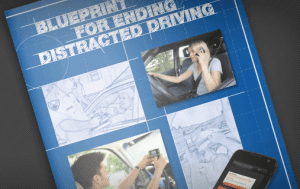 Secretary La Hood announced a comprehensive plan to build on the momentum and progress made to date to end distracted driving.
Secretary La Hood announced a comprehensive plan to build on the momentum and progress made to date to end distracted driving.
The Blueprint to end distracted driving contains these steps:
- Encouraging the remaining 11 states without distracted driving laws to enact and enforce this critical legislation;
- Challenging the auto industry to adopt new and future guidelines that reduce the potential for distractions on devices built or brought into vehicles;
- Partnering with driver education professionals to add new materials that educate novices about driver distraction and its consequences;
- Fund programs in California and Delaware to test the effectiveness of police enforcement and public education campaigns to reduce distracted driving
- Providing everyone with actions they can take to help end distracted driving on America’s roadways.
To download the Blueprint to End Distracted Driving go to http://www.distraction.gov/content/press-release/2012/06-7.html
Those of us who have spoken with high school students as part of EndDD.org’s 2012-2013 Student Awareness Initiative applaud all of these steps to end distracted driving. Through the EndDD.org program almost 50,000 students have seen these presentations. The feedback from the presentations, from presenters faculty and staff and students indicates that these presentations are making a difference and changing attitudes. To view feedback go to https://www.enddd.org/what-speakers-students-are-saying-about-the-presentation/
Joel Feldman, founder of EndDD,org, and father of Casey Feldman, a 21 year old woman who was killed by a distracted driver, said that “The Blueprint to End Distracted Driving will help focus and prioritize efforts to end distracted driving. Through Enbddd.org and the hundreds of lawyers and judges who are committed to continuing to speak with high school students I have no doubt that we will speak with hundreds of thousands of students during the 2012-2013 academic year promoting Secretary La Hood’s mission to end distracted driving. Our presentations are evidence–based, relying on studies that target teen attitudes and behaviors about distracted driving and that empower teens to change their driving behaviors and to help others drive safer as well.”





